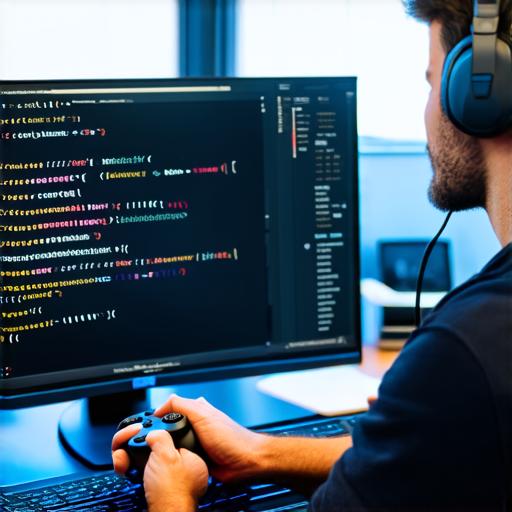Introduction
Multiplayer games have become increasingly popular in recent years. With the rise of mobile devices and internet connectivity, people can now play games with friends and family from anywhere in the world. In this guide, we will explore multiplayer game development using Unreal Engine 5, one of the most popular game engines on the market today.
Unreal Engine 5 Overview

Unreal Engine 5 is a powerful game engine that allows developers to create immersive and interactive games for various platforms. It includes advanced graphics, physics, and animation features that make it easy to create multiplayer games with realistic visuals and smooth performance. Unreal Engine 5 also supports dedicated server hosting, which can be used to host large-scale multiplayer games on remote servers.
Multiplayer Games in Unreal Engine 5
Unreal Engine 5 provides several tools and features that are essential for creating multiplayer games. These include:
Networking Features
Unreal Engine 5 includes a robust networking system that allows developers to create seamless multiplayer experiences across multiple devices and platforms. It supports both client-server and peer-to-peer networks, making it easy to create games that can run on a wide range of devices. The networking features in Unreal Engine 5 include:
- Dedicated server support: Unreal Engine 5 supports dedicated servers, which can be used to host games on remote servers. This allows developers to create scalable and reliable multiplayer experiences that can handle large numbers of players.
- Prediction and interpolation: These techniques help to reduce lag and improve responsiveness by predicting the actions of other players and interpolating them into the game state.
- Client-server networking: This allows for centralized control of game state, making it easier to manage and maintain the game.
Synchronization Features
Synchronization is essential for ensuring that all players see the same game state in real-time. The synchronization features in Unreal Engine 5 include:
Replication: This allows developers to replicate game objects, components, and data across multiple clients and servers.
Authority system: The authority system determines which client is responsible for updating certain game objects and components.
Conflict resolution: This helps to resolve conflicts that can occur when multiple clients try to update the same game object or component.Dedicated Server Support
Dedicated server support allows developers to create games that run on remote servers, which can be especially useful for large-scale multiplayer games. With dedicated server support, developers can ensure that their game runs smoothly and reliably, even with a large number of players.
Multiplayer Development Best Practices
When developing multiplayer games using Unreal Engine 5, there are several best practices that you should follow to ensure a smooth and enjoyable experience for all players. These include:
Optimizing Performance
Multiplayer games require high performance to provide a smooth experience for all players. This can be achieved by optimizing various aspects of the game, such as graphics, physics, and network code. Some best practices for optimizing performance include:
Reducing draw calls: Draw calls are expensive operations that can slow down the game. By reducing the number of draw calls, developers can improve performance.
Optimizing textures and materials: Textures and materials can have a significant impact on performance. By optimizing these assets, developers can reduce load times and improve frame rates.
Implementing client-side prediction: Client-side prediction allows for smoother gameplay by predicting the actions of other players and interpolating them into the game state.Implementing Load Balancing
Load balancing is essential for ensuring that the game runs smoothly on all devices and networks. Some best practices for implementing load balancing include:
Sharding: This involves dividing the game world into smaller, more manageable pieces. Each piece can be hosted on a different server, allowing developers to distribute the workload across multiple servers.
Load shedding: This involves reducing the number of players that are active in the game when the server is under load. This helps to reduce lag and improve performance.Ensuring Fairness
Multiplayer games require fairness to ensure that all players have an equal chance to win. Some best practices for ensuring fairness include:
Implementing anti-cheat systems: Anti-cheat systems can help to prevent cheating and ensure that all players are on a level playing field.



